In today’s tech-savvy world, navigating gadgets can feel like deciphering ancient hieroglyphics, especially for seniors. With everything from smart TVs to voice-activated assistants, it’s no wonder many find themselves wrestling with their devices rather than enjoying them. But fear not! Senior home technology support is here to bridge that digital divide, making technology less of a puzzle and more of a playful companion.
Table of Contents
ToggleOverview of Senior Home Technology Support
Senior home technology support focuses on addressing the unique challenges that older adults face when using modern devices. Many seniors struggle to navigate various technologies due to rapid advancements and complex interfaces. Understanding these issues helps tailor solutions that make technology simpler and more user-friendly for this age group.
Support services often include personalized training sessions for seniors, ensuring they feel comfortable with smartphones, tablets, and smart home devices. Educational workshops can equip older adults with the skills they need to operate devices effectively. Support can also encompass troubleshooting assistance, addressing issues that arise with technology in real time.
Some companies offer remote assistance options that allow technicians to access devices and resolve problems without needing to visit in person. This method improves response times and reduces frustration for seniors. Additionally, many communities provide resources like dedicated helplines to assist seniors when technology-related questions occur.
Home automation tools play a crucial role in enhancing senior safety and independence. Smart home devices can include automated lighting, security systems, and health monitoring solutions. Integrating these technologies into seniors’ homes increases their comfort levels and provides peace of mind to caregivers and family members.
Including technology support as part of senior care fosters greater independence and reduces social isolation. Many older adults report improved quality of life when equipped with the right tools and knowledge. By prioritizing senior home technology support, families ensure that their loved ones can fully engage with today’s digital world, enhancing their overall well-being and happiness.
Importance of Technology for Seniors
Technology plays a vital role in the lives of seniors, providing tools that enhance everyday experiences. Embracing modern devices can lead to greater autonomy and improved safety.
Enhancing Independence
Seniors gain significant independence through technology. Smart home devices empower them to control environments seamlessly. Voice assistants facilitate communication and information access, making tasks easier. Those using health monitoring solutions receive timely reminders for medication, promoting self-management. Additionally, video calling apps enable social connections, reducing feelings of isolation. Technology training ensures seniors confidently adopt these tools, allowing them to thrive in their daily lives.
Improving Safety
Safety enhancements through technology greatly benefit seniors. Automated security systems help monitor homes, providing peace of mind. Motion-activated lights ensure visibility during nighttime movements, preventing falls. Emergency alert devices allow instant communication during crises, offering quick access to help. Health monitoring technology alerts caregivers or doctors about critical changes, enhancing proactive health management. Overall, these technological advancements create a safer living environment, empowering seniors to maintain their independence securely.
Types of Technology Available
Seniors can benefit from various technologies designed specifically for their needs, enhancing communication, health management, and home safety.
Communication Tools
Video calling apps serve as a vital link for seniors, allowing them to connect with family and friends. Popular platforms like Zoom or FaceTime make conversations more personal, combating feelings of isolation. Messaging services also simplify communication, enabling quick exchanges without complex processes. Learning to use these tools becomes essential, promoting connectivity and engagement with loved ones.
Health Monitoring Devices
Wearable health devices track vital signs, including heart rate and activity levels, providing seniors with essential health insights. Systems like medication reminders ensure that older adults take prescribed doses on time, thereby encouraging compliance with health regimens. Remote health monitoring tools allow healthcare professionals to check on patients without in-person visits, offering peace of mind. Knowledge of these devices supports proactive health management, fostering greater well-being.
Smart Home Solutions
Smart home technologies enhance safety and convenience for seniors living independently. Automated lighting systems reduce fall risks by illuminating pathways at night. Security features, such as motion detectors and cameras, help maintain a secure environment. Voice-activated assistants can control various home devices, from temperature settings to entertainment options, all through simple commands. Understanding these solutions empowers seniors to create a comfortable and safe living space.
Challenges in Senior Home Technology Support
Seniors face significant challenges with home technology. These obstacles can hinder their ability to enjoy the benefits modern devices offer.
Accessibility Issues
Accessibility remains a primary concern for seniors when engaging with technology. Many devices feature small fonts and complex interfaces that complicate usage. Products lacking intuitive design often frustrate older users, making simple tasks like adjusting settings difficult. Voice recognition tools, which promise ease of use, sometimes misunderstand commands, leading to further irritation. Companies should prioritize user-friendly designs to ensure older adults can navigate technology confidently. Enhancing accessibility features in software not only supports seniors but also promotes a more inclusive environment.
Technical Literacy
Technical literacy is another hurdle for seniors. As technology evolves rapidly, many older adults struggle to keep pace with new trends and devices. Lack of familiarity with online platforms and applications contributes to feelings of confusion and insecurity. Personalized training sessions effectively address these gaps, fostering skills that enhance comfort levels. Workshops that focus on practical usage can improve understanding and confidence with smartphones, tablets, and smart home systems. Continuous education in technology encourages seniors to embrace these tools, reducing anxiety and enhancing overall digital engagement.
Best Practices for Implementation
Implementing senior home technology support requires thoughtful strategies that address the unique needs of older adults. Tailoring solutions to individuals enhances their experience with technology.
Tailoring Technology to Individual Needs
Customization is crucial for effective technology support. By assessing each senior’s specific requirements, caregivers can select appropriate devices and services. Different seniors exhibit varying levels of comfort and familiarity with technology. Personalized training sessions can bridge knowledge gaps. One-on-one consultations help identify strengths and weaknesses. Focusing on relevant applications increases engagement. For instance, a senior with mobility challenges may benefit from voice-activated systems, while another may prefer user-friendly tablets with larger fonts.
Providing Ongoing Support
Continuous support ensures seniors remain comfortable and confident with technology. Regular check-ins are essential for troubleshooting and guidance. Establishing a dedicated support line allows immediate access to assistance. This resource alleviates anxiety when problems arise. Offering refresher workshops helps reinforce skills and knowledge. Patience during these interactions fosters a supportive learning environment. Additionally, utilizing remote assistance tools enables technicians to resolve issues quickly. Engaging family members in this process can further enhance the support network for seniors.
Conclusion
Embracing technology can significantly enhance the lives of seniors. With the right support and training, older adults can navigate the digital landscape with confidence. Tailored solutions that cater to individual needs not only improve technical literacy but also foster independence and safety.
By integrating user-friendly devices and ongoing assistance, seniors can maintain meaningful connections and manage their health effectively. The role of family in this journey is invaluable, creating a supportive network that encourages learning and engagement. Ultimately, senior home technology support is crucial for enriching the lives of older adults, ensuring they thrive in today’s fast-paced digital world.








